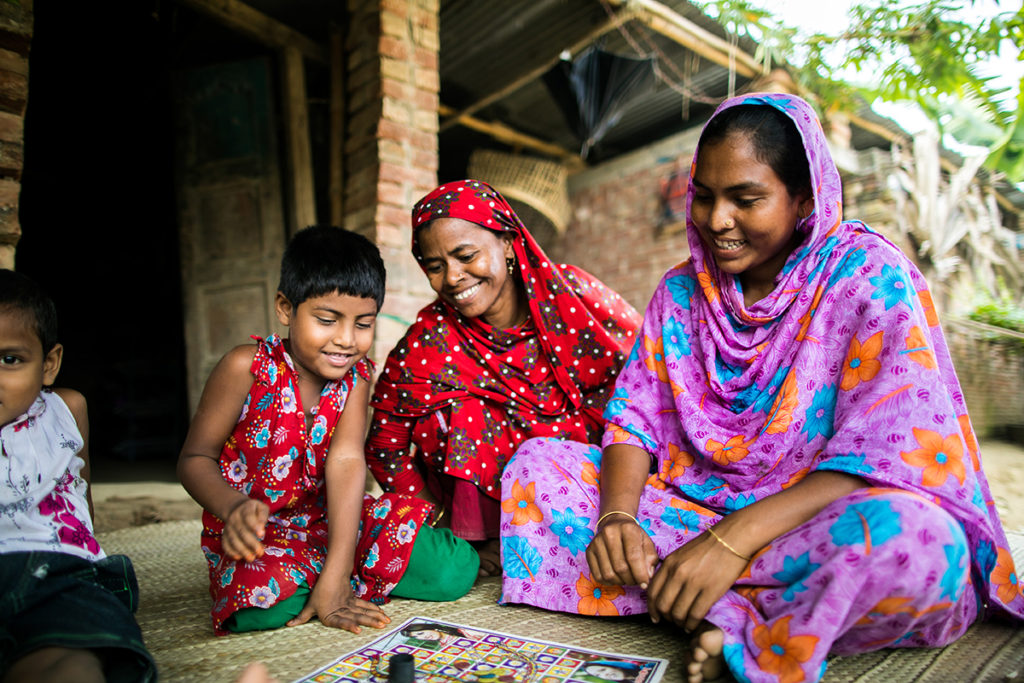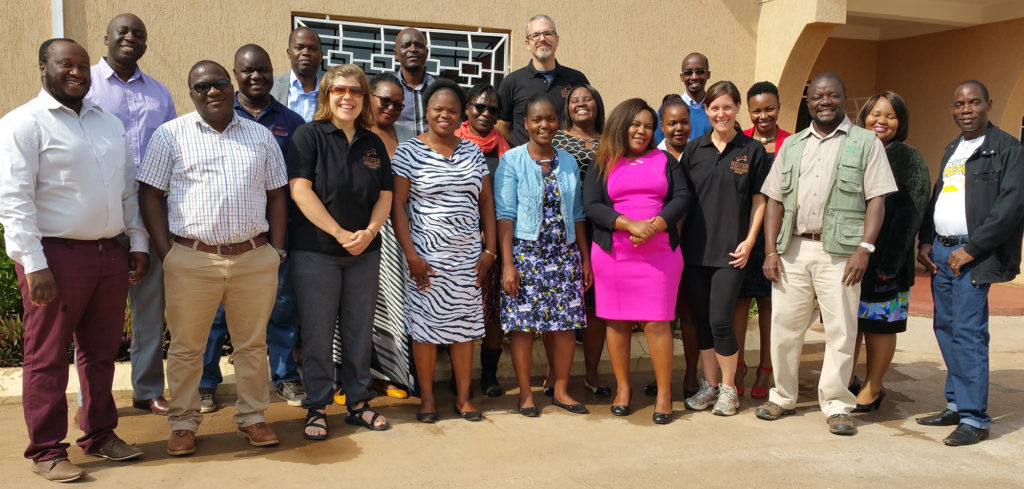Heifer International: Playing the Long Game
We love talking about Heifer International. The work they do, their smart methodology, the programs they design, all of it is an expansive system of effective, sustainable change that really works. Today, we’re going to shut up and encourage you to follow a few links so Heifer themselves can tell you what they do and why.

Joly and family (Emon (son, 13), Jihad (son, 4), Sumya (daughter, 6)) and Heifer Staff Jason Woods play snakes and ladders. (Bangladesh, October 2017, photo by Heifer International)
It’s more than giving a family a goat (though that literally happens). Heifer works hard so families can achieve and sustain a living income.
Their programs aren’t handouts. Participants work very hard to achieve their goals, and Heifer creates a holistic model that improves all aspects of participants’ lives at once. Think of it as no facet left behind.
And while they work at improving the big picture, the small details still make a difference, as you can see in one of our favorite videos that we posted in our launch blog but it’s our favorite so don’t judge us:
The Worldbuilders team has had the honor of joining Heifer at their working ranch in Arkansas and in the field in Malawi to find out not just what happens during their programs, but why they design them a certain way, and how all the details come together. We can’t digest in one blog everything we’ve learned from the hours of classes we’ve attended with Heifer or the days we spent talking with participants. But we can say that we lost track of how many times we said, “Oh wow, I never thought of that” when we learned how they worked.

The Heifer Malawi team, with a few Midwesterners thrown in. Petronella is grinning behind the lady in the pink, and Frank is wearing khakis and a green vest. (Malawi, July 2018, photo by Worldbuilders)
We will share our favorite example from our trip to Malawi, though! When we were talking to Frank and Petronella, our guides on that trip, they mentioned that the power dynamic between genders traditionally favors men. That’s the way it’s always been, and that’s actually how it is in Bangladesh as well. Women do all the work–the heavy lifting, raising children, and so on. The men hold jobs, but tend to spend money socially, like buying drinks for their friends, or gambling. Heifer never swoops in and says, “Hey, maybe do it differently.” They simply facilitate a discussion during the planning phase.
As part of the initial training–what’s covered in that first $200,000 we raised–participants and their husbands attend classes where they themselves plot out what they hope to accomplish. Petronella said that one of the exercises occurs when it comes time for participants to take responsibility for tasks to complete during the program. They list on a blackboard who does what, and of course, the column for the wives is pretty extensive.
When it’s all laid out, participants are surprised at how poorly balanced their current work loads are, and it’s usually the men who point it out and volunteer to start doing more chores that are traditionally considered women’s work. They know that if everyone pitches in, nobody gets burned out and more work gets done a lot quicker. Shortly after this stage, the women usually take over the family’s finances as well, since they run the household and know what needs to be budgeted for. Heifer encourages program participants to think outside the box and come up with their own plans and solutions to problems.
Okay, we said we weren’t going to talk a lot about Heifer, and we failed a little at that. But, if you’ll allow us one more fansquee today, it’s like Heifer is playing a massive engine building game where not only is the design amazingly sublime, but when the game is over, everyone wins. And we love playing that game.
